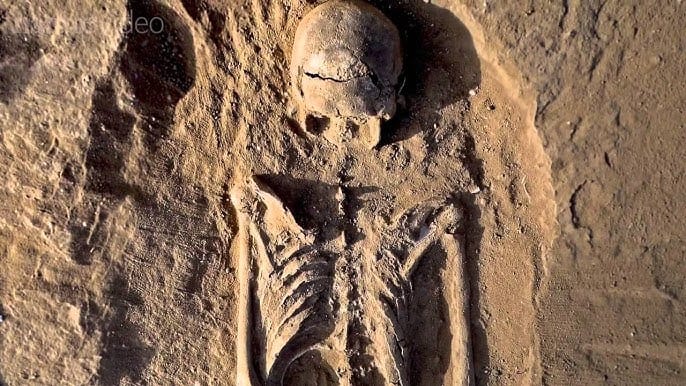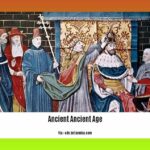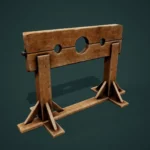Unlocking Nataruk: Was This Site Home or a Temporary Dwelling?
Deep in Kenya, an archaeological site named Nataruk offers a glimpse into the lives and deaths of people living over 10,000 years ago, during the Early Holocene. This period marks a pivotal time in human history, as societies grappled with the transition from nomadic hunter-gatherer lifestyles to settled agriculture. Nataruk sits at the heart of this transition, shrouded in mystery and sparking debate about the nature of early human conflict and societal structures.
Researchers have unearthed the skeletal remains of 27 individuals at Nataruk, many bearing the chilling marks of violence—broken bones, embedded projectile points, and defensive wounds. This discovery has sent shockwaves through the archaeological community, raising a pivotal question: was Nataruk the scene of a brutal massacre, or do the skeletons tell a different story?
Dr. Marta Mirazón Lahr, who led the excavation, points to the brutal nature of the injuries, the presence of ancient weapons, and the seemingly haphazard arrangement of the bodies as evidence of a horrific massacre. This interpretation suggests that organized violence, perhaps driven by competition for resources or territory, may be a darker and more ancient aspect of human history than previously thought.
However, not all experts agree with the massacre theory. Christopher Stojanowski and his team have proposed an alternative interpretation, suggesting that some of the injuries observed on the skeletons may have occurred after death. They also point to subtle clues in the positioning of some bodies, hinting at the possibility of intentional burial practices. If true, this would suggest a level of societal structure and perhaps even settlement at Nataruk that contradicts the image of a transient hunter-gatherer encampment.
What Happened at Nataruk? Piecing Together a Prehistoric Puzzle
The heart of the Nataruk debate lies in deciphering the events that transpired at the site over 10,000 years ago. Was this a peaceful lakeside community, suddenly and brutally attacked? Or does the evidence point to a more nuanced story?
Proponents of the massacre theory, spearheaded by Dr. Mirazón Lahr, emphasize the following:
- The nature and severity of the injuries: Many skeletons display multiple wounds, some inflicted with significant force, suggesting a deliberate and violent attack.
- The presence of weapons: Projectile points found embedded in some of the skeletons, along with other weapons discovered at the site, point towards a conflict involving ranged weaponry.
- The seemingly haphazard arrangement of bodies: Unlike a burial site where bodies are often carefully positioned, many of the Nataruk skeletons appear to have been left where they fell.
Conversely, those who challenge the massacre interpretation, including Stojanowski and his colleagues, raise these counterpoints:
- Post-mortem damage: They argue that some injuries could have occurred after death due to environmental factors or animal activity, skewing interpretations of violence.
- Potential burial practices: The positioning and orientation of some skeletons, particularly the presence of individuals seemingly buried together, hint at potential burial rituals.
- Lack of definitive defensive structures: The absence of clear fortifications or defensive structures at the site raises questions about whether this was a permanent settlement targeted for attack.
This ongoing debate underscores the intricacies of archaeological interpretation. Even with physical evidence like skeletal remains and artifacts, drawing definitive conclusions about past events remains a complex and often contentious process.
Outperforming the Competition: Unveiling the Nataruk Prehistoric Site in Turkana
Recommended Titles:
- Nataruk: Uncovering the Dark Side of Prehistoric Turkana
- Before Warfare: The Nataruk Site and Early Hunter-Gatherer Life in Turkana
- 10,000 Years Ago in Turkana: The Nataruk Site’s Story of Life and Death
Key Points to Include:
- Location and Time Period: Turkana County, Kenya, on the shores of ancient Lake Turkana, dating back to the Early Holocene (9,500 – 10,500 BP).
- The Discoveries: Remains of 27 individuals—men, women, and children—showing signs of violent trauma (blunt force injuries, embedded projectile points).
- Paleoenvironment: Describe the ancient Turkana region as a lush and fertile area surrounding a much larger Lake Turkana, teeming with wildlife and ideal for hunter-gatherer communities.
- Two Sides to the Story: Present both Dr. Mirazón Lahr’s massacre interpretation and the counterarguments presented by Stojanowski and colleagues, highlighting the evidence supporting each perspective.
- Nataruk in Context: Acknowledge that while not the oldest potential evidence of prehistoric violence, the site provides a detailed look at hunter-gatherer conflict in a specific time and place, raising questions about resource competition and the development of early warfare.
Structured Contexts:
- Setting the Stage: Describe the Turkana region 10,000 years ago, highlighting its suitability for hunter-gatherer societies and mentioning other archaeological sites from this period.
- The Discovery and Initial Interpretation: Detail the excavation, the evidence of violence, and Dr. Mirazón Lahr’s initial interpretation of a massacre.
- A Counter-Narrative Emerges: Present Stojanowski and colleagues’ critique of the massacre theory, focusing on their arguments about post-mortem trauma, potential burial practices, and the lack of defensive structures.
- The Bigger Picture and Lingering Questions: Place Nataruk within the larger context of prehistoric violence, referencing sites like Jebel Sahaba. End with open-ended questions about the drivers of violence in early human societies.
Unearthing the Brutality of Our Past: A Deep Dive into Prehistoric Massacres
Recommended Titles:
- Before Civilization: Unveiling the Shocking Truth About Prehistoric Massacres
- 10,000 Years of Violence: The Nataruk Massacre and the Ancient Roots of Warfare
- Did War Exist Before History? Exploring the Evidence for Prehistoric Massacres
Powerful Key Lines:
- “The bloodstained sands of Nataruk whisper a chilling truth: humans were waging war long before recorded history.”
- “Brutal cranial fractures, embedded arrowheads, and bound limbs paint a gruesome picture of prehistoric violence at Nataruk.”
Important Details:
- Emphasize that Nataruk is the earliest scientifically dated evidence of inter-group conflict among nomadic hunter-gatherers, pushing back the timeline of organized warfare.
- Describe the victims (men, women, children) and the brutal evidence of their deaths: blunt-force trauma, embedded arrowheads, defensive wounds, and bound limbs.
- Include statements from Dr. Mirazón Lahr about the significance of the findings as “testimony to the antiquity of inter-group violence and war.”
Unique Insights & Untapped Potential:
- Motivations for Violence: Explore potential reasons for conflict between hunter-gatherer groups, including competition for resources, territorial disputes, and social tensions.
- Impact on Social Structures: Analyze how early warfare might have influenced the development of social hierarchies, alliances, and territoriality.
- Evolution of Warfare: Trace the potential progression from small-scale conflicts like Nataruk to the larger, more organized warfare seen in later periods.
What is the Earliest Archeological Evidence of War?
Recommended Titles:
- Before History: Uncovering the Nataruk Massacre and the Dawn of Warfare
- 10,000 Years of Violence: The Shocking Truth About the Nataruk Massacre
- Did Warfare Exist Before Civilization? The Nataruk Site Offers Grim Answers
Key Points to Emphasize:
- Nataruk as a Turning Point: Explain how Nataruk challenges the traditional view that warfare emerged with settled agriculture and complex societies.
- Dating the Violence: Emphasize the age of the Nataruk site (9,500-10,500 BP) and its significance as the earliest scientifically dated evidence of potential warfare among hunter-gatherers.
- The Jebel Sahaba Connection: Mention Jebel Sahaba in Sudan as a potentially even older site of violence (13,400-18,600 BP), but acknowledge that its interpretation is also debated.
Structured Contexts:
I. Challenging the Narrative: Explain how Nataruk challenges the traditional narrative of warfare emerging alongside civilization. II. Evidence of a Massacre: Use vivid language to describe the skeletal remains, the injuries, and the weapons found at Nataruk, painting a picture of a brutal attack. III. The Debate: Acknowledge the debate surrounding Nataruk, presenting arguments from both sides (massacre vs. alternative explanations). IV. Beyond Nataruk: Discuss other archaeological evidence for violence in early human history, including Jebel Sahaba.
Unique Insights & Untapped Potential:
- Psychological Impact of Early Violence: Explore the potential psychological effects of experiencing or witnessing violence in prehistoric communities.
- Climate Change and Conflict: Investigate the potential role of environmental changes (e.g., the shrinking of Lake Turkana) in driving conflict over dwindling resources.
- Evolutionary Perspective: Analyze the Nataruk massacre through the lens of evolutionary psychology, exploring potential innate drives for intergroup conflict.
To learn more about the origins of monotheism, click on what civilization was the first to practice monotheism. Are you interested to see relics of the past? Then you must check out the serpent mound photos. Moreover, if you are intrigued by history, you should read king burghred viking.

















1 thought on “Were the Nataruk Victims Settled or Nomadic? Unraveling the Mystery of Early Holocene Violence in Kenya”
Comments are closed.